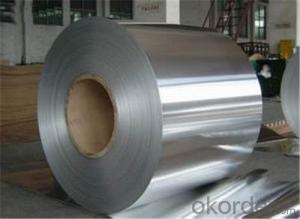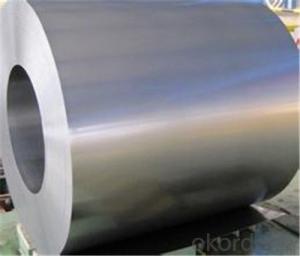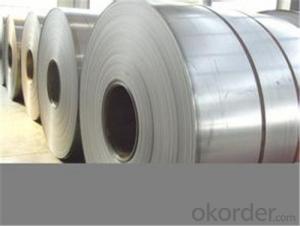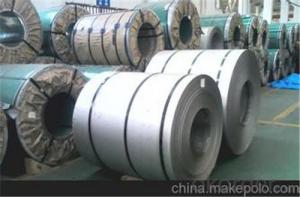Cold Rolled Steel Coil/Sheets with High Quality from China
- Loading Port:
- Tianjin
- Payment Terms:
- TT OR LC
- Min Order Qty:
- 200 m.t.
- Supply Capability:
- 89000000 m.t./month
OKorder Service Pledge
OKorder Financial Service
You Might Also Like
Description of cold rolled steel coil :
The raw material of cold rolled steel coil/sheet is high quality hot rolled product, and after pickling, kinds of new technology and new process of global cold rolling production have been applied. Therefore the manufacturing, home appliance, automobile etc.
Specification of cold rolled steel coil :
standard | AISI, ASTM, DIN, GB, JIS |
Steel Grade | Q195/Q195L/st12/dc01/spcc |
Thickness | 0.15-1.5mm |
Width | 500-914mm |
Length | coil |
Place of Origin | Shandong,china(mainland) |
Producing ablity | 500,000 Tons/month |
Type of payment | T/T, L/C |
Packing | As per customer's requirement |
Delivery | 30days after contract |
Price | FOB&CIF |
MOQ | 20Tons |
Packaging & delivery of cold rolled steel coil :
Packaging Detail: | Oil coated, metal shell and anti-rust paper with corner protected by sheet or coil |
Delivery Detail: | 30 days after receiving deposit or L/C |
Application of cold rolled steel coil :
1. Refrigerators, cabinets, power distribution baords and drums.
2. Automobile floor and roof panels.
3. Automobile fenders and quarter panels
4. Automobile fenders and quarter panels
Images of cold rolled steel cold rolled steel coil:
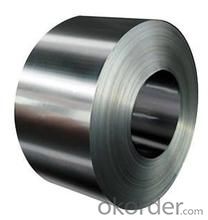
FAQ
1.What's your MOQ?
50MT, it is for one container.
2.Whether your company have QC teams?
Yeah, sure, our QC team is very important, they will keep the quality control for our products.
3. What's your normal delivery time?
Our delivery time about 10-20days for standard sizes, if you have other requirements like hardness and width ,it is about 20-40days. But don't worry ,we also try our best for the
- Q:Does anyone know how to make a steel helmet, or does anyone know where to direct me websites-wise? i've just started looking on the web for info, so when i get back here i might've already found some info, but more wouldn't hurt, especially if from people who are interested on the subject. i know nothing about metallurgy, nothing on the art of metal working etc... please help.
- Steel okorder
- Q:What are the different methods of joining steel coils?
- There are several methods of joining steel coils, including welding, mechanical fastening, adhesives, and interlocking systems. Welding involves fusing the ends of the coils together using heat or pressure. Mechanical fastening includes using bolts, screws, or other fasteners to hold the coils together. Adhesives can be used to bond the coils, providing a strong and durable connection. Interlocking systems involve designing the coils with special shapes or profiles that fit together, creating a secure joint.
- Q:I want to anodize steel using heat. some steel turns gray instead of coloring when I heat it up using a torch.
- Steel doesn't anodize in the sense that aluminum and some other metals do. However, it can be heat-colored. The trick is to clean the surface first (it must be oxide free), then heat gently until the colors appear. These are called temper colors in steel. They are due to a thin adherent layer of oxide that forms and thickens as temperature is increased. They are quite temperature dependent. As the steel is heated, the first color to appear is pale yellow. This will progress through darker yellows, browns, purples, and blues as the temperature rises. Above blue, the oxide becomes the gray/black color you are apparently getting - this is the result of heating too fast and too hot. See the chart at the site below for colors in plain carbon steel. Note that the temperatures are pretty low - It all starts around 400 F and if you go above 600 F the show's all over.
- Q:What is the standard weight of steel coils?
- The weight of steel coils can differ based on the particular type and dimensions of the coil. Nevertheless, in broad terms, the weight of steel coils usually spans from a few hundred kilograms to multiple metric tons. The thickness, width, and length of a steel coil play a crucial role in determining its weight. Numerous industry standards and specifications are in place to govern the production and commerce of steel coils, encompassing directives for establishing the suitable weight range for different coil sizes.
- Q:Are steel coils resistant to rust and corrosion?
- Steel coils exhibit resistance to rust and corrosion. Typically, these coils are crafted from either carbon steel or stainless steel, both of which possess exceptional properties for combating corrosion. Carbon steel coils are frequently coated with a protective layer, such as zinc or a polymer coating, to augment their resistance to rust and corrosion. Conversely, stainless steel coils possess inherent corrosion-resistant qualities due to the presence of chromium. This element creates a protective oxide layer on the steel's surface, effectively preventing rust and corrosion. Nonetheless, it is crucial to acknowledge that the extent of resistance may also hinge on the specific grade and quality of the steel employed in the coils, as well as the environmental conditions to which they are exposed.
- Q:When steel is cast, does it become weaker/more brittle or anything of this nature? what are the side effects of steel casting on the steel itself?How can you correct these?
- It contains too many air bubble spacing and too many impurity that make it easily to be broken apart. Melt it down again with high heat to remove most impurity, after this process,it becomes iron.
- Q:What are the different types of coil edge trimming machines?
- There are several types of coil edge trimming machines available in the market. Some common types include manual coil edge trimmers, pneumatic coil edge trimmers, and automatic coil edge trimmers. Manual coil edge trimmers require manual operation and are suitable for low volume production. Pneumatic coil edge trimmers use compressed air to power the trimming process, making them faster and more efficient. Automatic coil edge trimmers are fully automated machines that can handle high volume production, enhancing productivity and reducing labor requirements.
- Q:What are the different testing methods used for steel coils?
- There are several testing methods used for steel coils, including visual inspection, dimensional measurements, hardness testing, tensile testing, bend testing, and surface quality analysis. These methods help ensure the quality and compliance of steel coils with the specified standards and requirements.
- Q:What are the different methods of pickling steel coils?
- There are several methods of pickling steel coils, including acid pickling, electrolytic pickling, and mechanical pickling. Acid pickling involves immersing the coils in a bath of diluted acid, such as sulfuric acid or hydrochloric acid, to remove surface oxides and impurities. Electrolytic pickling uses an electric current to remove the oxide layer from the steel coils, usually in a solution of sulfuric acid. Mechanical pickling involves scrubbing the coils with abrasive materials or using mechanical rollers to remove the scale and impurities. Each method has its own advantages and is chosen based on the specific requirements and conditions of the steel coils.
- Q:How does the steel coil market vary regionally?
- The steel coil market varies regionally due to several factors such as the level of industrialization, economic development, and the specific demands and requirements of each region. In developed regions such as North America and Europe, the steel coil market is relatively mature and highly competitive. These regions have well-established manufacturing industries and infrastructure, which create a strong demand for steel coils for various applications such as automotive, construction, and machinery. The market in these regions is driven by factors like technological advancements, product innovation, and the need for high-quality materials. On the other hand, developing regions such as Asia-Pacific, Latin America, and Middle East & Africa experience rapid industrialization and urbanization, driving the demand for steel coils. These regions have growing construction sectors, booming automotive industries, and increasing infrastructure projects, which contribute to the rising demand for steel coils. Additionally, the availability of low-cost labor and raw materials in some of these regions makes them attractive for steel coil production. Furthermore, the regional variations in regulations and trade policies also impact the steel coil market. Tariffs, import/export restrictions, and government initiatives to promote domestic production can affect the market dynamics. For instance, protectionist measures like trade barriers or anti-dumping policies can limit the import of steel coils, leading to increased domestic production and regional market growth. Moreover, geographical factors and climate conditions can also influence regional steel coil markets. Coastal regions with high humidity levels and exposure to saltwater require specialized corrosion-resistant steel coils, while inland regions with extreme temperatures may demand coils with specific mechanical properties to withstand such conditions. Overall, the steel coil market varies regionally due to differences in industrialization, economic factors, specific demands, regulations, and geographical considerations. Understanding these variations is crucial for steel coil manufacturers, suppliers, and consumers to effectively navigate the market and capitalize on the opportunities available in each region.
1. Manufacturer Overview |
|
|---|---|
| Location | |
| Year Established | |
| Annual Output Value | |
| Main Markets | |
| Company Certifications | |
2. Manufacturer Certificates |
|
|---|---|
| a) Certification Name | |
| Range | |
| Reference | |
| Validity Period | |
3. Manufacturer Capability |
|
|---|---|
| a)Trade Capacity | |
| Nearest Port | |
| Export Percentage | |
| No.of Employees in Trade Department | |
| Language Spoken: | |
| b)Factory Information | |
| Factory Size: | |
| No. of Production Lines | |
| Contract Manufacturing | |
| Product Price Range | |
Send your message to us
Cold Rolled Steel Coil/Sheets with High Quality from China
- Loading Port:
- Tianjin
- Payment Terms:
- TT OR LC
- Min Order Qty:
- 200 m.t.
- Supply Capability:
- 89000000 m.t./month
OKorder Service Pledge
OKorder Financial Service
Similar products
New products
Hot products
Related keywords
